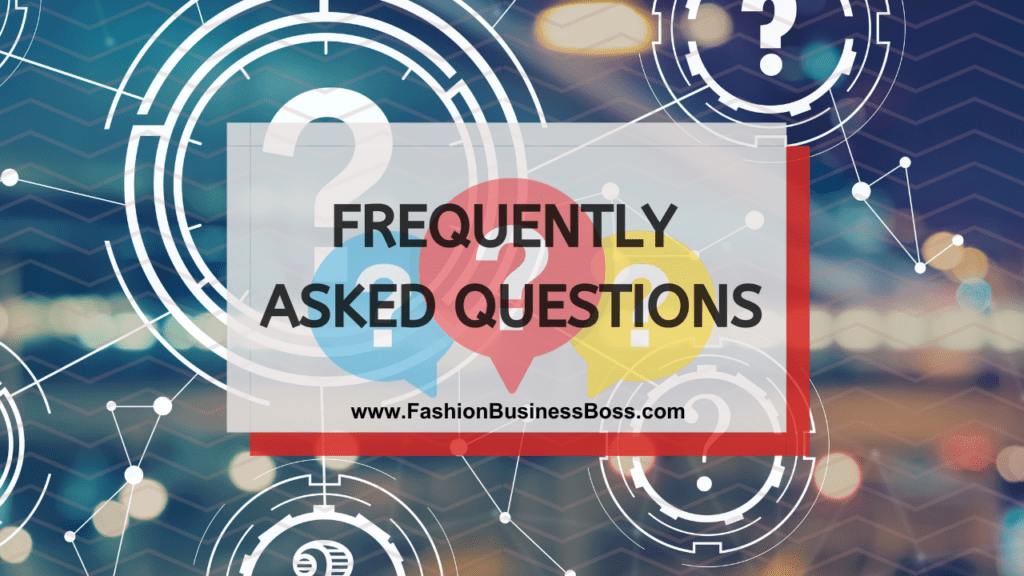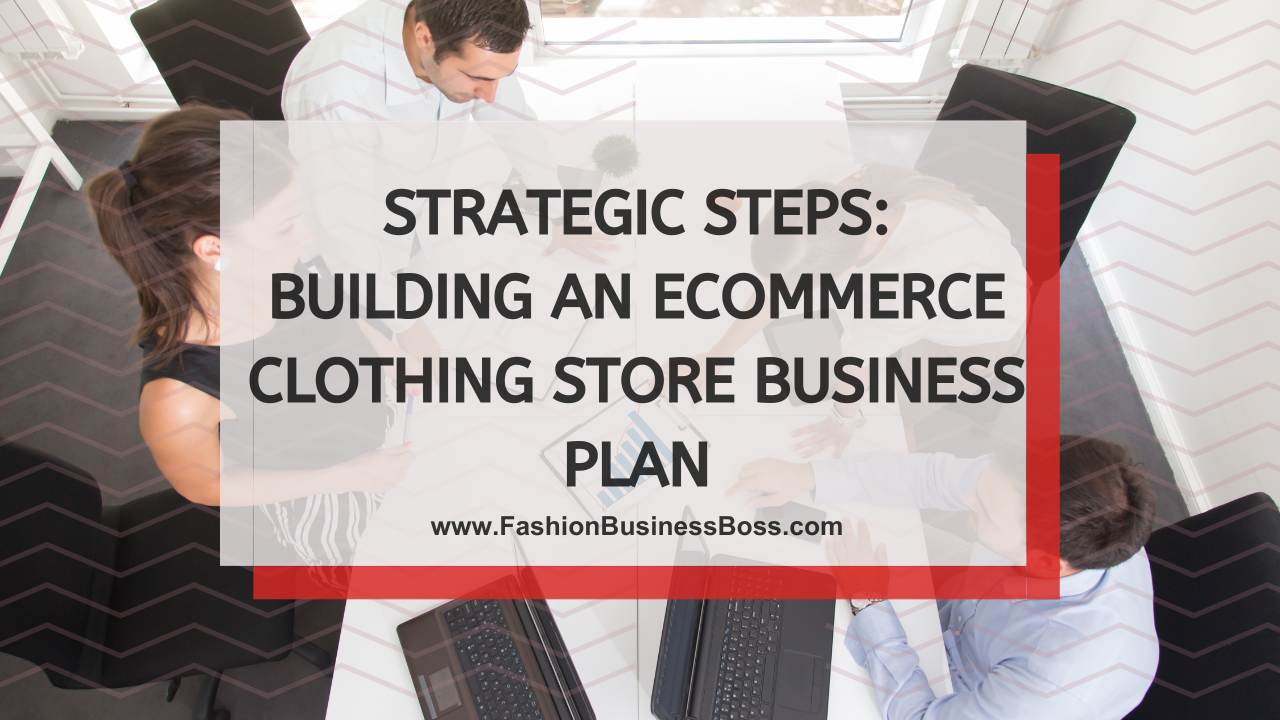Launching and running an e-commerce clothing store requires careful planning and strategy. Whether you’re starting from scratch or looking to refine your existing business.
To create an e-commerce clothing store, crafting a well-thought-out business plan is crucial. It provides a roadmap for growth and ensures you’re prepared for the dynamic world of online fashion retail.
In this article, we’ll delve into the essential elements of crafting a business plan specifically tailored to your clothing store.
Executive Summary: The Blueprint for Improvement

The executive summary serves as the cornerstone of your e-commerce clothing store business plan. Think of it as the compass that guides your journey. Its primary purpose is to offer a condensed version of your store’s core essence, its mission, and the overarching goals you aim to achieve.
In simpler terms, this section acts like a sneak peek, giving readers a glimpse of what they’ll encounter throughout the entire plan. It provides them with a basic understanding of your store’s purpose and what you’re striving to accomplish.
In the executive summary, you should aim to clarify key elements. These include your store’s identity, its mission statement (which is essentially its purpose), and the big-picture objectives you’ve set for it. By presenting this information succinctly and clearly, you lay a strong foundation for the rest of your business plan, ensuring that readers are on the same page and ready to delve deeper into the details that follow.
Read more about: Sewing Dreams: Create Your Own Clothes Online
Market Analysis: Know Your Fashion Landscape
The market analysis segment of your e-commerce clothing store business plan is all about gaining a solid grasp of the fashion landscape in the online world. It’s like having a roadmap to navigate your way through this terrain.
To begin, it’s essential to examine the current trends in e-commerce fashion. This means keeping a close eye on what’s popular and what consumers are looking for in the online fashion market. Also, take the time to identify who your competitors are. These are other businesses similar to yours that you’ll be competing with for customers.
Furthermore, it’s crucial to pinpoint your target audience, which refers to the specific group of people who are most likely to be interested in what your clothing store offers. Understanding their preferences and needs is key.
Lastly, consider what sets your clothing store apart from the rest. What makes it unique in this vast fashion landscape? This is where you should dive deep into your niche – the specialized area or market segment that your store caters to. By defining your competitive advantage, you’ll be better equipped to position your store effectively and attract the right customers.
Business Structure: The Legal Framework
The section on business structure in your e-commerce clothing store business plan focuses on establishing the legal framework for your enterprise. It’s akin to constructing the sturdy foundation of a building before you start decorating it.
Firstly, you must decide on the legal structure that best suits your clothing store. You have several options, including a sole proprietorship, which means you’re the sole owner, or alternatives like forming a Limited Liability Company (LLC) or a corporation, which offer different legal protections and responsibilities.
Next, it’s crucial to address any licenses and permits required to run your e-commerce business legally. These documents are akin to the permissions needed to operate in a specific location or industry. Obtaining the necessary licenses and permits ensures that you’re complying with the law, which is vital for a smooth and trouble-free operation.
This section emphasizes the importance of creating a solid legal foundation for your clothing store. It’s about making sure you’ve got the right legal structure in place and have all the required permissions to conduct your business without any legal hitches.
Product and Service Offering: Dressing to Impress

The section about your product and service offerings in your e-commerce clothing store business plan is akin to describing the items in your wardrobe. It’s about showcasing what you have to offer and how you plan to present it to your customers.
To begin, you should provide a clear inventory of the clothing and accessories that you intend to sell through your online store. This includes specifics about the types of garments and items you’ll have available for purchase.
It’s also important to delve into your sourcing strategy. This means explaining how and where you will acquire the products you plan to sell. Will you manufacture them, source them from wholesalers, or employ a combination of approaches?
Your pricing approach is another key aspect to cover. This involves detailing how you will set the prices for your clothing and accessories, ensuring they are competitive and attractive to your target customers.
Lastly, you should outline your inventory management plan. This includes strategies for keeping your inventory up-to-date and appealing to your customers. Regularly refreshing your offerings can help maintain customer interest and engagement.
Read more about: Sewing Your Way to Achievement: Starting a Clothing Business
Marketing and Sales Strategy: Crafting Your Brand
In the section dedicated to your marketing and sales strategy within your e-commerce clothing store business plan, your focus is on shaping and defining your brand identity. Think of this as crafting the personality and message that your store will convey to potential customers.
Firstly, it’s essential to detail the online marketing channels you intend to utilize. These are the various platforms and methods you’ll use to reach and connect with your audience. Common channels include social media, email marketing, and search engine optimization (SEO). Explain how you plan to employ these channels to spread the word about your clothing store.
Next, you should share your plans for acquiring and retaining customers. Customer acquisition involves explaining how you’ll attract new buyers to your store, while customer retention outlines your strategies for keeping them coming back for more.
This section is all about creating a clear roadmap for your brand’s online presence and interaction with customers. It’s about communicating how you’ll introduce your store to the world, connect with potential buyers, and build lasting relationships with them.
Financial Projections: The Numbers Game
In the financial projections section of your e-commerce clothing store business plan, we delve into the numbers that underpin your business. It’s like looking at the budget for a big project; it helps you see the financial aspects clearly.
Here, you’ll provide comprehensive projections, including income statements, balance sheets, and cash flow forecasts. These documents lay out the expected income, expenses, assets, and liabilities of your clothing store over a certain period, usually a year or more. It’s like painting a financial picture of your business’s future.
Income statements outline your anticipated revenues and costs, helping you understand if your store will make more money than it spends. Balance sheets show your financial position at a specific point in time, detailing what you own and owe. Lastly, cash flow forecasts predict the money coming in and going out of your business.
This section serves as evidence of your financial knowledge and your grasp of e-commerce economics. It’s about demonstrating your understanding of the financial aspects that will drive your clothing store’s operations, helping potential investors or partners gain confidence in your business plan.
Operations and Logistics: Behind the Scenes

In the operations and logistics section of your e-commerce clothing store business plan, we venture behind the scenes to understand how your store will run efficiently. Think of this as the backstage view of a theater production – it’s where the real work happens.
Begin by explaining your strategy for order fulfillment. This is the process of receiving and processing customer orders, packing them, and getting them ready for shipment. You must clarify whether you plan to use third-party fulfillment services or manage these tasks in-house.
Customer service is another critical aspect to cover. Detail how you intend to assist customers with their inquiries, concerns, and issues. This involves outlining your customer support processes and how you’ll ensure customer satisfaction.
Lastly, provide insights into your supply chain. Explain how you’ll source the products you sell, manage inventory, and ensure a steady flow of goods to meet customer demands. This part is like explaining the journey your products take from manufacturers or suppliers to the hands of your customers.
Read more about: Start Strong: The Best Websites for Your Clothing Brand
Team and Management: Building a Strong Foundation
In the team and management section of your e-commerce clothing store business plan, we focus on building a solid foundation for your business. Think of this as assembling the players for a sports team – each member has a specific role.
If you have core team members, introduce them and clarify their roles within your business. Describe their expertise and what they bring to the table. Explain how their skills and responsibilities will contribute to the overall growth of your clothing store.
Outline your hiring strategy for the future. Share your plans for expanding your team as your store grows. Consider the positions you’ll need to fill and the qualifications you’ll seek in potential hires. This is akin to drafting a game plan for your team’s growth.
This section is about creating a strong foundation for your clothing store by assembling the right people and planning for future team expansion. It ensures that your business has the talent and capabilities needed to navigate the challenges and opportunities that may arise as you continue to grow.
Milestones and Goals: The Path Forward
In the milestones and goals section of your e-commerce clothing store business plan, we chart the course for your store’s journey. Think of it as creating a roadmap with clear signposts to mark your progress.
Firstly, it’s essential to set specific goals. These are precise objectives that you aim to achieve. For instance, you might set a goal to reach a certain number of monthly sales or to expand your product line.
Make sure your goals are measurable. This means you can track your progress using numbers or data. For example, if you set a goal to increase website traffic, you should specify the percentage or number by which you want to increase it.
Furthermore, goals should be time-bound. This means you set a deadline for achieving them. It’s like having a target date for reaching each milestone.
These milestones and goals will serve as guideposts along your journey. They provide a clear path to follow, help you measure your progress, and allow you to adapt your strategies as needed. Ultimately, they keep you on track toward building a thriving e-commerce clothing store.
Risk Assessment: Preparing for Challenges

The risk assessment section of your e-commerce clothing store business plan is all about being prepared for the challenges that may arise. Think of it as planning for unexpected weather on a journey; you want to be ready for any storm.
First and foremost, it’s important to acknowledge potential risks and challenges that your clothing store might encounter. These could include economic downturns, supply chain disruptions, or unexpected shifts in customer preferences. By identifying these risks, you’re taking the first step in being prepared.
Next, provide contingency plans. These are strategies you’ll put into action if these risks become a reality. For instance, if there’s a disruption in your supply chain, you might have a backup supplier in place. If sales drop unexpectedly, you may have a plan for cost-cutting measures.
Read more about: Starter Brand Fashion Finds: Where to Begin Your Search?
Conclusion
A meticulously crafted e-commerce clothing store business plan is your compass in the dynamic world of online fashion retail. It’s a living document that should evolve alongside your business, adapting to market changes and opportunities.
Frequently Asked Questions

Q: What is the importance of keyword research in e-commerce?
A: Keyword research is vital in e-commerce because it helps businesses identify the words and phrases their target audience uses to find products or services online. By optimizing content with relevant keywords, businesses can improve their visibility in search engine results and attract potential customers.
Q: How can I determine the right keywords for my e-commerce store?
A: To determine the right keywords, start by conducting thorough research using tools like Google Keyword Planner or third-party SEO software. Consider your product offerings, target audience, and competitors. Select keywords that have decent search volume and relevance to your products.
Q: What is the significance of long-tail keywords in e-commerce SEO?
A: Long-tail keywords are specific, often longer phrases that cater to niche audiences. They are valuable in e-commerce SEO because they can attract highly targeted traffic with a higher likelihood of conversion. Incorporating long-tail keywords in your content can improve your chances of reaching interested buyers.
Q: How should I incorporate keywords into my e-commerce content?
A: Keywords should be used naturally and strategically in product descriptions, blog posts, and other content. Avoid keyword stuffing, which can harm your SEO efforts. Instead, focus on creating high-quality, informative content that naturally incorporates relevant keywords where they make sense.
Q: Is keyword optimization a one-time effort in e-commerce SEO?
A: No, keyword optimization is an ongoing process in e-commerce SEO. Search trends and customer preferences change over time. Regularly review and update your keyword strategy to stay relevant and maintain or improve your search engine rankings.
To learn more about starting your own clothing business, check out my startup documents here.
Please note that the contents of this blog are for informational and entertainment purposes only and should not be construed as legal advice. Any action taken based on the information provided in this blog is solely at your own risk. Additionally, all images used in this blog are generated under the CC0 license of Creative Commons, which means they are free to use for any purpose without attribution.

Meet Shawn Chun: Entrepreneur and Fashion Business Fan.
I’m a happy individual who happens to be an entrepreneur. I have owned several types of businesses in my life from a coffee shop to an import and export business to an online review business plus a few more and now I create online resources for those interested in starting new ventures. It’s demanding work but I love it. I do it for those passionate about their business and their goals. That’s why when I meet a designer or boutique owner at a craft fair, farmers market, retail location or anywhere else I see myself. I know how hard the struggle is to retain clients, find good employees and keep the business growing all while trying to stay competitive.
That’s why I created Fashion Business Boss: I want to help fashion business owners like you build a thriving business that brings you endless joy and supports your ideal lifestyle.

